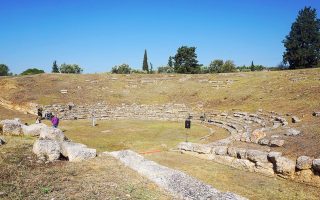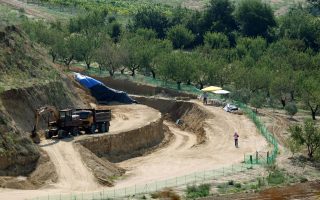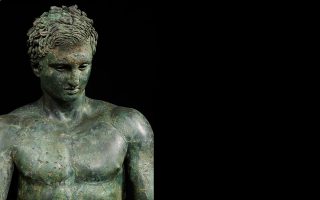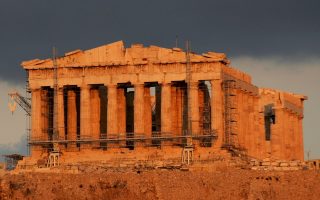Archaeologists wrap up phase one of restoration works on Despotiko
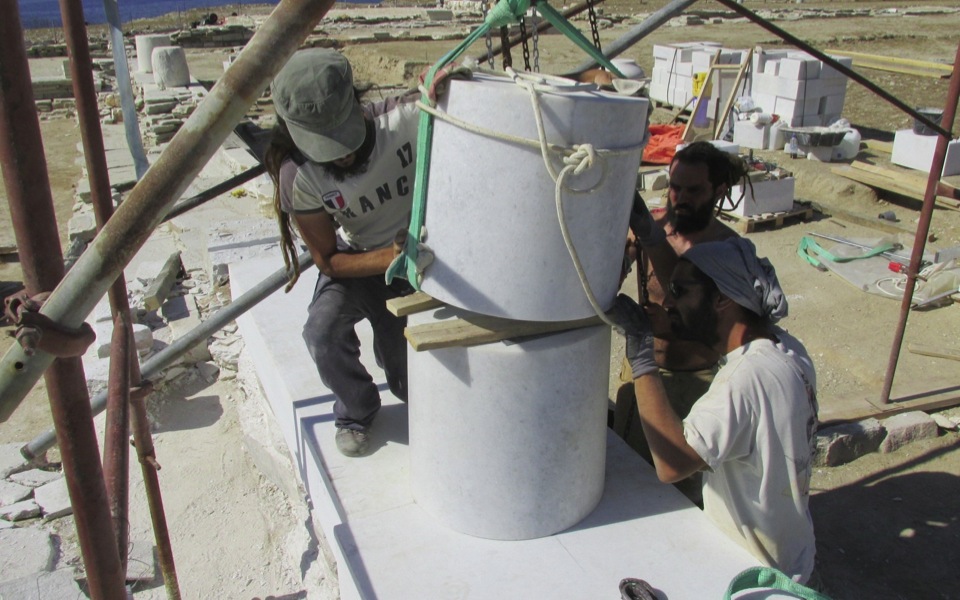
The boat that connects Antiparos to the islet of Despotiko, off the eastern Aegean island’s western coast, sails on a daily basis, carrying archaeologists, architects, conservationists and marble masons, as well as the necessary material to complete the first phase of the restoration of the sanctuary’s Archaic temple and the hestiatorion (dining hall).
The works, which also involve restoring other buildings within the sanctuary, began after the Central Archaeological Council (KAS) gave the green light. One of the many challenges is transporting heavy materials and tools to and on the tiny island.
New stone material has already been added to the length of the stylobate (the platform of the temple) in the porch of the hestiatorion, on which a colonnade of eight columns rested. Its total length is 17 meters, of which 7 meters was missing. A copy of a marble column drum has been placed on the stylobate of the hestiatorion, on top of which the remaining ancient parts will be positioned. The reconstruction of a wall on the northern side of the temple – which had been all but destroyed – has been completed with the use of modern and ancient structural material, while the program foresees the filling in of a significant part of the temple’s stylobate, among other things.
The team working on Despotiko is led by director of excavations Yiannis Kouragios, archaeologist Cornelia Daifa, architect Goulielmos Orestidis and conservationist Giorgos Karampalis.
Over the past 18 years, archaeologists have unearthed 15 structures – two of which were discovered this year – and a number of stunning finds dating to the proto-Cycladic years, the Geometric and Hellenistic periods up to the late Middle Ages. These have redefined our understanding of worship habits in the Cyclades during the Geometric and Archaic period.
The restoration and conservation program is backed by Thanasis and Marina Martinou. The restoration and the earthquake hazard studies are funded by the AG Leventis Foundation. The excavation works are financed by the Kanellopoulos Foundation, the Ministry of Shipping and Island Policy and the International Center for Hellenic and Mediterranean Studies (DIKEMES). Private individuals and local organizations have also supported the effort.
